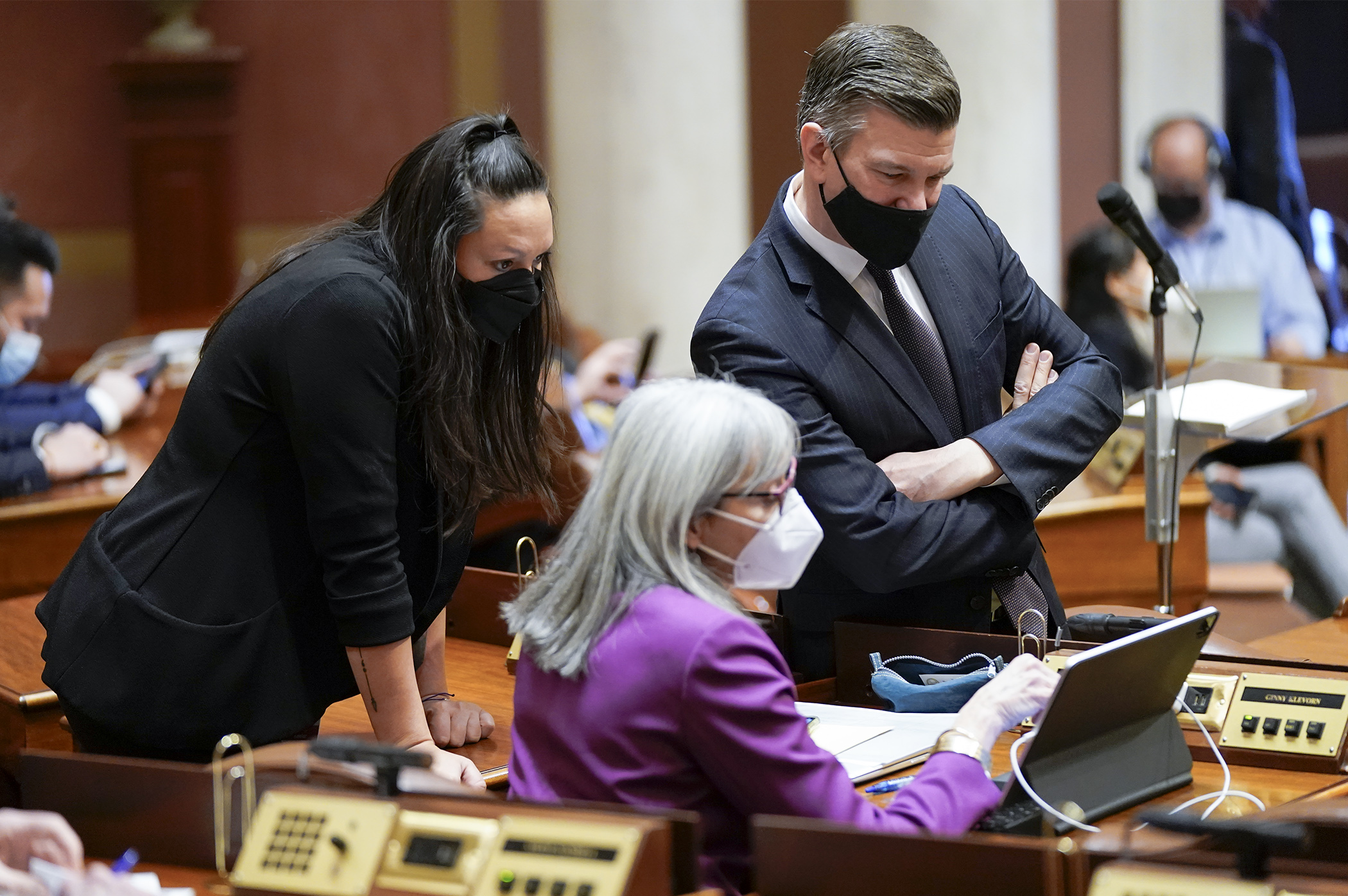Minnesota’s redrawn legislative, congressional maps unveiled

Many Minnesotans will have new representation thanks to revised maps released Tuesday showing the redrawn legislative and congressional districts that will direct the state’s elections for the next 10 years.
A five-judge panel appointed by the Minnesota Supreme Court last year to oversee the redistricting process released the redrawn maps after the Legislature failed to agree on them by today’s deadline, which officials said must be met for the 2022 election cycle to proceed on schedule.
[MORE: See Minnesota’s new legislative and congressional district maps]
The state is constitutionally required to redraw the boundaries of its voting districts to reflect population growth and shifts over the past decade, the latest based on the results of the 2020 Census. Each district must have roughly the same number of people, so districts where population was lost or grew more slowly are expanded geographically while the boundaries of faster growing districts shrink.
The Legislature has been unable to reach an agreement on the final maps in recent decades leaving it to the state’s courts to determine the new districts. That was the case this year as well, as the judges explained in their ruling:
“To afford counties and municipalities time to complete local redistricting, the statutory deadline for completing congressional and legislative redistricting is 25 weeks before the state primary election in the year ending in two. … That date has arrived, and the legislature has not yet enacted a redistricting plan for the Minnesota Senate and Minnesota House of Representatives. To avoid delaying the electoral process, the panel must now act.”
They wrote that the state’s total resident population is 5,706,494 based on the results of the census, which makes the “ideal population” of the state’s 67 Senate districts 85,172, and half that, 42,586, for the 134 House districts.
“Because Minnesota’s population growth over the last decade was not uniform across the state, most legislative districts are substantially above or below these ideals,” the judges said, adding that many urban and suburban areas grew significantly. For example, House District 53B in Woodbury is now 21% over the “ideal population.”
At the same time, many rural areas either grew more slowly or lost population. House District 16A, which includes Lac qui Parle, Yellow Medicine and portions of Lyon and Redwood counties, for example, is currently 11.2% below its population ideal.
The House Redistricting Committee held a series of meetings this fall to hear testimony, take input and debate the differing partisan plans backed by DFL and GOP members. The committee held a Nov. 19 hearing to learn more about the DFL redistricting plan for the state’s legislative districts, then met again on Nov. 23 to hear about the DFL’s congressional redistricting plan.
House Republicans released their redistricting proposals Dec. 3, saying both their legislative and congressional maps would split fewer counties, cities and judicial districts than the DFL plan.
The committee’s DFL majority approved its redistricting plans Dec. 9 by party-line vote, but neither the House nor Senate advanced its respective proposals far enough to receive a full vote by either body.
House Speaker Melissa Hortman (DFL-Brooklyn Park) released a statement Tuesday thanking the committee for its work.
“The House held many public hearings last fall, and the Redistricting Committee voted out legislation containing maps and principles that reflected the testimony Minnesotans provided. It’s disappointing that the Senate chose to not introduce any legislation,” Hortman wrote. “With the maps now released from the judicial panel, we will begin the process of analyzing the information, which will take some time.”
This story will be updated throughout the day as additional information is available.
Related Articles
Search Session Daily
Advanced Search OptionsPriority Dailies
Ways and Means Committee OKs proposed $512 million supplemental budget on party-line vote
By Mike Cook Meeting more needs or fiscal irresponsibility is one way to sum up the differences among the two parties on a supplemental spending package a year after a $72 billion state budg...
Meeting more needs or fiscal irresponsibility is one way to sum up the differences among the two parties on a supplemental spending package a year after a $72 billion state budg...
Minnesota’s projected budget surplus balloons to $3.7 billion, but fiscal pressure still looms
By Rob Hubbard Just as Minnesota has experienced a warmer winter than usual, so has the state’s budget outlook warmed over the past few months.
On Thursday, Minnesota Management and Budget...
Just as Minnesota has experienced a warmer winter than usual, so has the state’s budget outlook warmed over the past few months.
On Thursday, Minnesota Management and Budget...